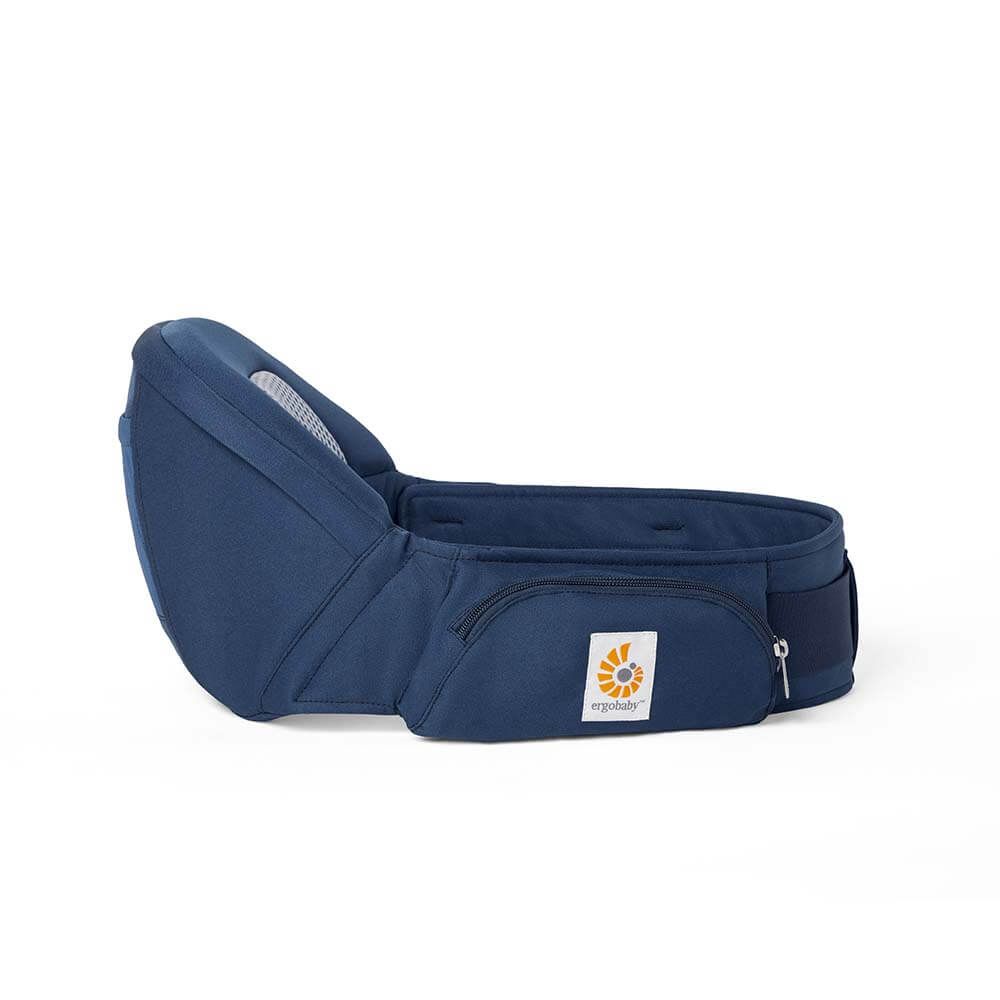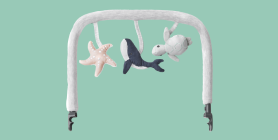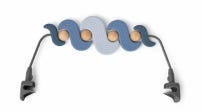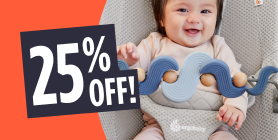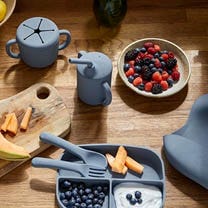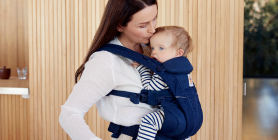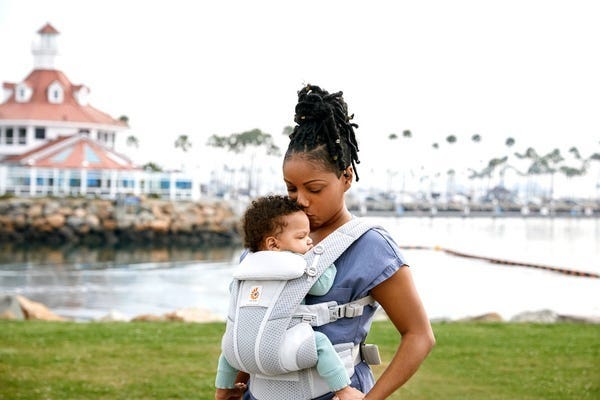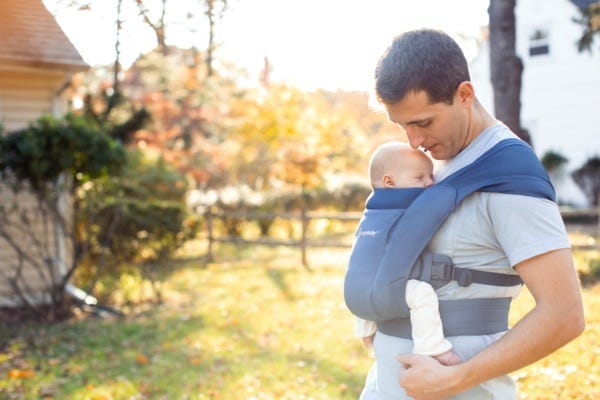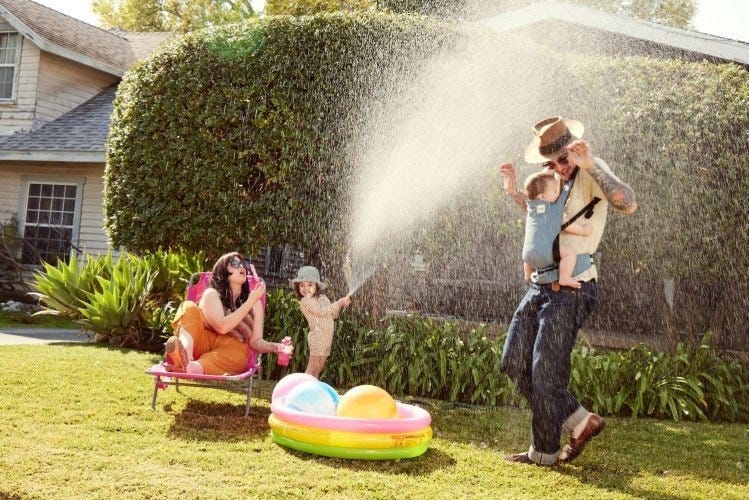Countless articles, reports and doctors assure us that “breast is best,” and in terms of a newborn’s nutritional needs, of course it is. Thankfully, there are alternatives in the rare cases where breastfeeding, or feeding breast milk, is not possible. Those instances are rare, and as The World Health Organization states, “Only under exceptional circumstances can a mother’s milk be considered unsuitable for her infant. For those few health situations where infants cannot, or should not, be breastfed, the choices of the best alternatives are–expressed breast milk from an infant’s own mother, breast milk from a healthy wet-nurse or a human-milk bank, or a breast-milk substitute fed with a cup, which is a safer method than a feeding bottle and teat–depends on individual circumstances.” [WHO 2003] Breast milk contains the hormone oxytocin, the feel good hormone, which promotes bonding. It reduces the chances of breast, uterine and ovarian cancer, and may reduce the rate and intensity of postpartum depression. Breast milk contains the exact nutrients, fats, carbohydrates, protein and caloric contents that are needed. The digestibility is perfect, natural and just right! The colostrum which is present right after birth, and for the days before the milk comes in, is full of the immunoglobulin needed to protect infants from infection in the first months. So, why, after at least 200,000 years of Homo sapiens breastfeeding their young, do we need to prove the benefits? By the 1800s scientists and doctors began to investigate what was needed in food mixes for babies to thrive. Before then, if a baby was unable to breastfeed, for whatever reason (birth defects, mother’s health, etc.…) a wet nurse was employed. Cultural shifts changed this, and by 1867, the first commercially available baby foods were created. Women began to use them instead of breastfeeding. “Manufacturers promoted the baby formulas and suggested that the use of baby formulas was the modern (and better) way to feed babies. By 1950, more than half of the babies in the U.S.A. were fed some form of baby formula.” [Breastfeeding 2010] It is also well known that breastfeeding helps a woman get back her shape, but that is just the outward benefit. In the first days, breastfeeding helps the uterus to contract and return to its pre-pregnancy shape. The oxytocin that is released relaxes the baby and the mother. This is a time to cuddle, connect and bond. Babies are born with a sight distance of 8 to 10 inches, the exact distance from the breast to the mother’s eyes. Perfect. The U.S. government spent two million dollars on an ad campaign to promote breastfeeding. One of the ads shows a pregnant woman logrolling; another shows her riding a mechanical bull. Both ads ask: "You wouldn't take this kind of risk with your baby, so then why would you take the risk by not breastfeeding?" [Vargas 2006] Why do we need to spend two million dollars convincing women to do what is the most natural thing on earth? Wouldn’t those two million dollars be better spent on providing women with the support, information and nutritional facts about the benefits of breastfeeding? Or better yet, on programs that educate the public on how important it is to allow women to breastfeed where and whenever they need to? America has one of the lowest breastfeeding rates of any industrialized country. That could be due, in part, to how uneasy Americans get when it comes to seeing a woman nursing in public. [Vargas 2006] It seems odd that in American society there is no problem with a large (excuse the pun) amount of breasts being shown on the cover of just about any fashion magazine, on reality television shows, or in advertisements. Breasts in our culture are ubiquitous…but only a certain type are acceptable? The amount of push up, pull in, move-up-and-over bras that are available to physically enhance breasts for their looks far exceeds the amount of support available for women to breastfeed! Our culture spends billions on industries that idealize and idolize the breasts of young women, in order to sell clothes, cosmetics and cars. To portray breasts as primarily sexual, at the expense of all the other important and natural functions associated with them, is to perpetuate a distortion and a stereotype that is hurting our women and babies. We need to rethink and remember, as a culture, the importance of the breast in the nurturing of life. We can begin by how we speak about breastfeeding. One thing I’d like to question is why we use the word “nursing” in the United States to talk about breastfeeding as if the word “breastfeeding” was somehow dirty or taboo. ‘Nursing’ also carries the connotation of somehow being medical or clinical, thereby subtly removing the naturalness associated with feeding. Nurses are angels on earth, in my opinion, and caring for our babies is somewhat like nursing, but let’s call a spade a spade and a breast a breast. There is a plethora of paraphernalia on sale to hide breasts while feeding. But, under the tents that women buy, so they don’t offend anyone while breastfeeding at the mall, they are, at the same time, sitting under a poster of a scantily clad young woman, which is absurd. I’m not saying that privacy and being discreet is wrong, in fact there are a variety of ways to feed a baby discreetly. Wearing two piece outfits, like a t-shirt and shorts or jeans, or a skirt and shirt is far easier to feed in, than, for example, a dress or shirt that needs to be unbuttoned from the top. Some babies too often prefer to be fed privately. My third baby refused to breastfeed if I was around lots of other people, or if I was talking! She wanted some alone time and knew that this time was special for us to bond, relax and nurture each other. I say ‘each other,’ because the process of breastfeeding can be a very nurturing time for the mother as well. Supporting women to feed their babies as nature intended is the only right thing to do. Women need to stand up, support each other and demand their right to be mothers. Women who choose to go back to work must be given the time, privacy and encouragement to express breast milk for their babies, if that is what they choose to do. There are many companies that provide longer maternity leaves and places for babies to come to work and be available for their mom’s to visit with them during the day. These are the pioneers of the industry and should be recognized and applauded for their initiatives. A list of companies that allow babies in the work place can be found at: http://www.babiesatwork.org/companies.html. Perhaps if you have the time, you might write a letter of appreciation? Again, please let me reiterate, when there are reasons that breastfeeding is not possible, there are alternatives. Though these are rare, no woman should feel guilty for needing to choose this option. One of the reasons that women stop breastfeeding, or never start in the first place is often due to lack of support and education. I remember being shocked at the amount of pain I experienced at first, even though my baby was latched on properly, and I was completely committed to breastfeeding. Babies have incredible jaws! They are Olympic suckers! After the initial period of getting used to this new experience, I found it an easy, comfortable and inexpensive way to feed my baby. I think it is our duty as women, sisters, mothers and friends, to let new mothers know that there can be discomfort at first. Equipped with understanding, maybe there won’t be as many women giving up due to the pain. How many women put themselves through grueling “boot camp” work outs, crunches, or even walking in the highest of heels, who say, “No pain, no gain.”? Let’s concentrate on the gains, and give our babies what is best.
[WHO and Unicef] Global Strategy for infant and young child feeding. Ed. 2003. The World Health Organization and Unicef. www.who.int/nutrition/publications/HIV_IF_decision_maker.pdf [Breastfeeding Mom] "History of Breastfeeding." breastfeeding-mom.com 2010. http://www.breastfeeding-mom.com/history-of-breastfeeding.html. [Vargas] Elizabeth Vargas, "Is The Breast Better?." ABC 20/20 13 July 2006. http://abcnews.go.com/2020/story?id=2188066&page=1 Links: American Academy of Pediatrics on Child Health Topics, such as this list of featured articles on breastfeeding: http://www.aap.org/healthtopics/breastfeeding.cfm Urgently needed: human breast milk donors Human Milk Banking Association of North America has full info here: http://www.hmbana.org/
Emotional Benefits of Getting Outside
Spending time in nature with your baby can strengthen the bond between you. The simple act of holding your baby close, feeling their warmth, and sharing new experiences together can create strong emotional connections. It’s also a wonderful way to reduce stress and improve your mood. When my littles were extra fussy, I’d take a walk around the neighborhood. Even though I don't live in an area with trails and surrounded by nature, simply behind outside changed everything. A little vitamin D does wonders!
Cognitive Development
Nature is a sensory wonderland for babies. The different sights, sounds, and smells can stimulate your baby’s senses and promote cognitive development. Watching leaves rustle, hearing birds chirp, and feeling the texture of a tree bark can all contribute to their learning and development.
All About Baby Carriers for Nature Adventures
Choosing the Right Baby Carrier
When it comes to selecting the best baby carrier for summer adventures, there are several options to consider.
Types of Baby Carriers:
- Wraps: Perfect for newborns, providing a snug and secure fit.
- Slings: Ideal for quick and easy use, offering good ventilation.
- Soft Structured Carriers: Versatile and comfortable for both parent and baby, suitable for longer trips.
Factors to Consider:
- Baby’s Age and Weight: Ensure the carrier is appropriate for your baby’s size and weight. For example, Ergobaby’s Embrace Newborn Carrier is perfect for the fourth trimester where baby is small and you’re looking for an easy way to stay close. As they grow, you’ll want to upgrade to an all-position carrier that’s meant for growing babies.
- Parent’s Comfort and Ergonomics: Look for carriers with padded shoulder straps and lumbar support if you’re planning on longer outings.
- Ease of Use: Choose a carrier that is easy to put on and take off.
- Climate and Breathability: Opt for carriers made of breathable fabrics to keep you and your baby cool in hot weather.
Safety Tips:
- Proper Positioning: Ensure your baby is seated correctly, with their legs in an "M" position and their head should be close enough to kiss.
- Checking for Wear and Tear: Regularly inspect your carrier for any signs of damage.
- Ensuring Adequate Support: Make sure the carrier provides proper support for your baby’s head and neck.
Exploring Nature with a Baby Carrier
Ideal Spots for a Nature Walk with Baby
- Parks and Gardens: Great for leisurely walks and picnics.
- Nature Trails and Forests: Perfect for more adventurous outings.
- Beaches and Lakesides: Wonderful for enjoying the water and sand, with the right carrier.
Activity Ideas
- Hiking: Enjoy a scenic hike with a hiking baby carrier that offers support and storage.
- Bird Watching: Use your carrier to keep your baby close while you explore and observe wildlife.
- Picnics: A carrier can free up your hands, making it easier to carry picnic supplies.
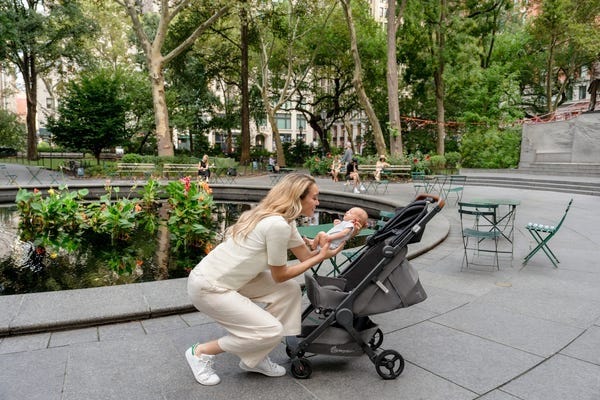

Advantages of Using Strollers for Nature Adventures
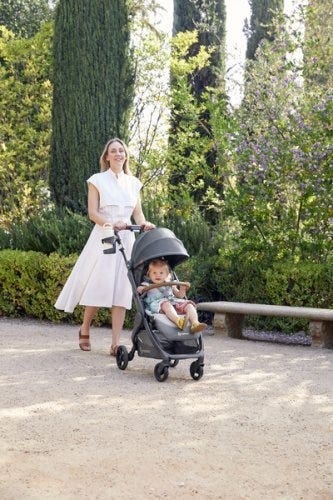

While baby carriers are fantastic for mobility and closeness, depending on the adventure of choice you might want to be a stroller along too.
There are a LOT of baby stroller options on the market. So we understand how confusing it can be to choose the one that’s right for your family. Not only are there a variety of brands, but a variety of strollers that serve different purposes.
There are a few types of strollers on the market:
- Full-sized stroller: This is typically the stroller parents thing of buying for all its versatility.
- Lightweight or umbrella stroller:These compact strollers are perfect for on-the-go adventures.
- Jogging stroller: Designed for parents who want to combine fitness with outdoor adventures.
- Double stroller: Designed for parents with multiple kids, especially twins.
- Car seat carrier: These strollers connect to a specific car seat. We don't typically recommend these as they can be unsafe for baby and uncomfortable for parents who are pushing.
Learn more about the types of strollers and which one would be best for you.
Benefits of Bringing a Stroller
- Storage Space for Gear: Ample room for carrying all your essentials like a diaper bag, beach toys and more.
- Shade and Weather Protection: Built-in canopies to shield your baby from the sun when they are lounging.
- Options: If you have more than one kid, you can stroll with one and carry the other. Or, if you’re getting warm or your little one is getting fussy, you can switch up their position from stroller to carrier or vice versa.
Safety Tips for Strollers
- Ensure your stroller is in good working condition. Make sure buckles are still buckling and that there are no rips or holes that could compromise your baby’s safety.
- Use sunshades or bug nets to protect your little one’s skin.
- Securing the baby properly: always buckle up your baby for safety even if you think they are old enough to go without the buckle.
Combining Baby Carriers and Strollers
For the ultimate flexibility, consider using both a baby carrier and a stroller on your outings.
Combining both options allows you to adapt to different situations. Use the carrier for more rugged trails and switch to the stroller for smoother paths or when your baby needs a nap.
Transition Tips
- Smooth Transitions: Plan stops where you can easily switch from carrier to stroller.
- Pack Light: Only bring essentials to make transitions easier.
Tips for a Successful Adventure
Planning Ahead
- Route Planning: Choose baby-friendly trails and parks. Check local mom groups or outdoor groups and get recommendations for the best outings for kids.
- Check Weather Conditions: Avoid extreme heat or unpredictable weather. Even with our most breathable carriers, when it’s hot, it’s hot. And having two bodies against each other in the heat will be naturally hot and sticky already.
- Packing Checklist: Include diapers, snacks, water, sunscreen, and a first-aid kit. These all-position carriers have storage pockets where you can fit some of the items easily!
- Stay Hydrated and Nourished: Pack healthy snacks to keep energy levels up and bring plenty of water for both you and baby.
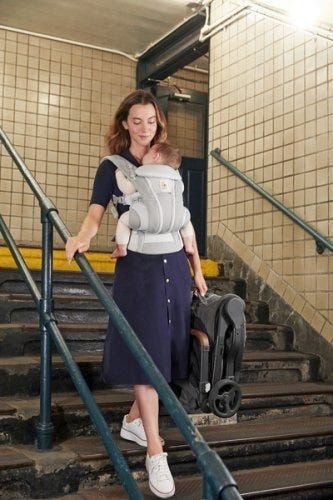

Summer adventures with your baby are a wonderful way to create lasting memories and enjoy the beauty of nature together. From baby carriers to strollers, Ergobaby products are designed to provide comfort and ease for both you and your little one. So, gear up, get outside, and explore the world with your baby by your side.
Ready to embark on your own summer adventures? Check out Ergobaby’s range of baby carriers and strollers to find the perfect match for your family’s needs. Visit our website today and start planning your next outdoor excursion!





